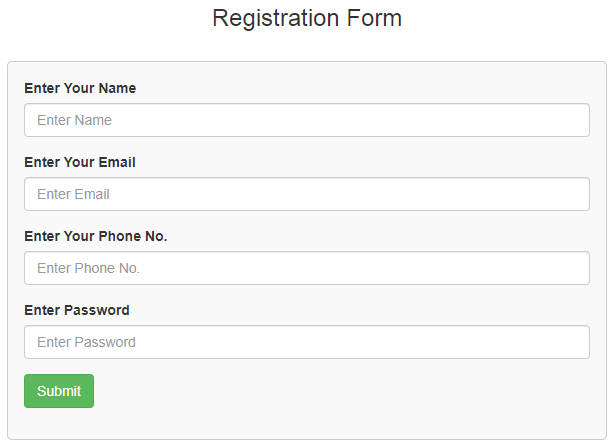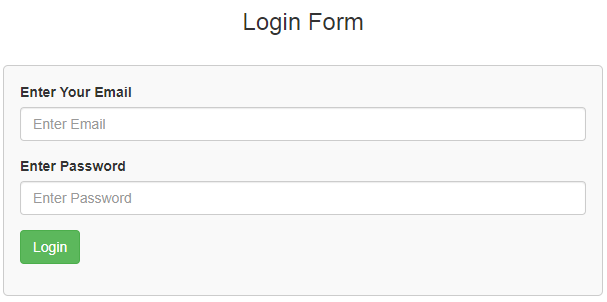Password hashing in PHP and MySQL
- Tech Area
- July 15, 2024
In this tutorial, We will see how to use password_hash and password_verify function in PHP and MySQL.
Files used in this tutorial:
1- connection.php (database connection file)
2- index.php (registration form with password_hash() function)
3- login.php (login form with password_verify() function)
Below are the step by step process of how to use hashing in PHP and MySQL.
Step 1: Create a Database connection
In this step, create a new file connection.php to create database connection.
connection.php
<?php
$server = "localhost";
$username = "root";
$password = "";
$database = "college_db";
$connection = mysqli_connect("$server","$username","$password");
$select_db = mysqli_select_db($connection, $database);
if(!$select_db)
{
echo("connection terminated");
}
?>Step 2: Create a file for registration form
Now create a new file index.php This is the main file used for registration form and submit data into the database.
This screenshot shows the registration form.

index.php
<html>
<head>
<title>Registration Form</title>
<link rel="stylesheet" href="https://maxcdn.bootstrapcdn.com/bootstrap/3.3.6/css/bootstrap.min.css" />
</head>
<style>
.box
{
width:100%;
max-width:600px;
background-color:#f9f9f9;
border:1px solid #ccc;
border-radius:5px;
padding:16px;
margin:0 auto;
}
.msg
{
color: red;
font-weight: 700;
}
</style>
<?php
include('connection.php');
$msg="";
if(isset($_POST['register']))
{
$name = $_POST['name'];
$email = $_POST['email'];
$phone = $_POST['phone'];
$password = $_POST['pwd'];
$hashed_password = password_hash($password, PASSWORD_DEFAULT);
$stmt = $connection->prepare("insert into tbl_student (name,email,phone,password) values(?,?,?,?)");
$stmt->bind_param("ssss",$name,$email,$phone,$hashed_password);
if($stmt->execute())
{
$msg = "Data inserted successful!";
}
else
{
$msg = "Error!";
}
$stmt->close();
}
?>
<body>
<div class="container">
<div class="table-responsive">
<h3 align="center">Registration Form</h3>
<a href="login.php">Login</a>
<div class="box">
<form method="post">
<div class="form-group">
<label for="name">Enter Your Name</label>
<input type="text" name="name" id="name" placeholder="Enter Name" required class="form-control"/>
</div>
<div class="form-group">
<label for="email">Enter Your Email</label>
<input type="email" name="email" id="email" placeholder="Enter Email" required class="form-control"/>
</div>
<div class="form-group">
<label for="phone">Enter Your Phone No.</label>
<input type="text" name="phone" id="phone" placeholder="Enter Phone No." required class="form-control"/>
</div>
<div class="form-group">
<label for="pwd">Enter Password</label>
<input type="password" name="pwd" id="pwd" placeholder="Enter Password" required class="form-control"/>
</div>
<div class="form-group">
<input type="submit" id="register" name="register" value="Submit" class="btn btn-success" />
</div>
<p class="msg"><?php if(!empty($msg)){ echo $msg; } ?></p>
</form>
</div>
</div>
</div>
</body>
</html>Step 3: Create a file for login form
Now create a new file login.php This file used for login form.
This screenshot shows the login form.

login.php
<html>
<head>
<title>Login Form</title>
<link rel="stylesheet" href="https://maxcdn.bootstrapcdn.com/bootstrap/3.3.6/css/bootstrap.min.css" />
</head>
<style>
.box
{
width:100%;
max-width:600px;
background-color:#f9f9f9;
border:1px solid #ccc;
border-radius:5px;
padding:16px;
margin:0 auto;
}
.msg
{
color: red;
font-weight: 700;
}
</style>
<?php
include("connection.php");
$msg = "";
if(isset($_POST['login']))
{
$email = $_POST['email'];
$password = $_POST['pwd'];
$stmt = $connection->prepare("select email, password from tbl_student where email=?");
$stmt->bind_param("s",$email);
$stmt->execute();
$result = $stmt->get_result();
if($result->num_rows ===1)
{
$row = $result->fetch_assoc();
$hashpwd = $row['password'];
if(password_verify($password,$hashpwd))
{
$msg = "Login successful!";
}
else
{
$msg = "Wrong password!";
}
}
else
{
$msg = "User not registered!";
}
$stmt->close();
}
?>
<body>
<div class="container">
<div class="table-responsive">
<h3 align="center">Login Form</h3>
<a href="index.php">Registration Form</a>
<div class="box">
<form method="post">
<div class="form-group">
<label for="email">Enter Your Email</label>
<input type="email" name="email" id="email" placeholder="Enter Email" required class="form-control"/>
</div>
<div class="form-group">
<label for="pwd">Enter Password</label>
<input type="password" name="pwd" id="pwd" placeholder="Enter Password" required class="form-control"/>
</div>
<div class="form-group">
<input type="submit" id="login" name="login" value="Login" class="btn btn-success" />
</div>
<p class="msg"><?php if(!empty($msg)){ echo $msg; } ?></p>
</form>
</div>
</div>
</div>
</body>
</html>Download Source Code
Join 10,000+ subscriber
